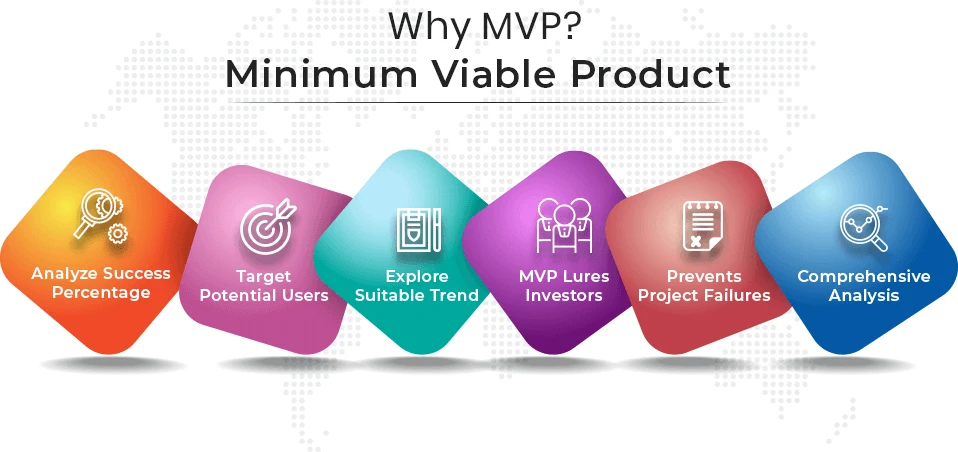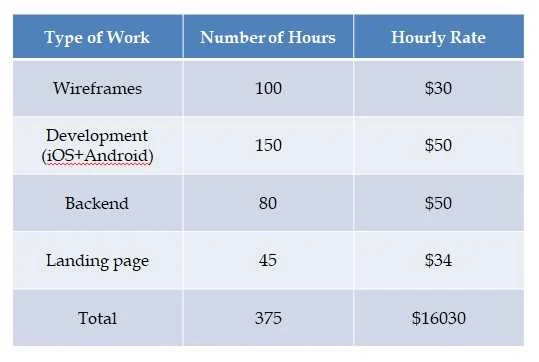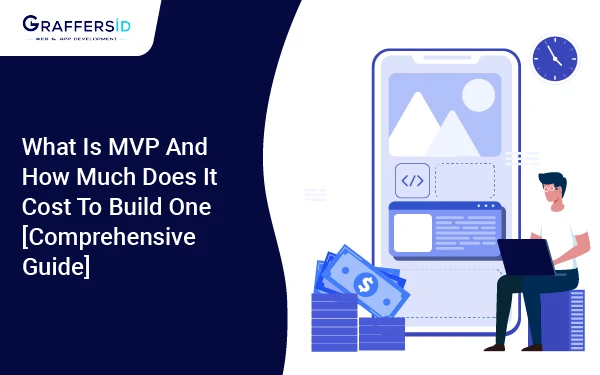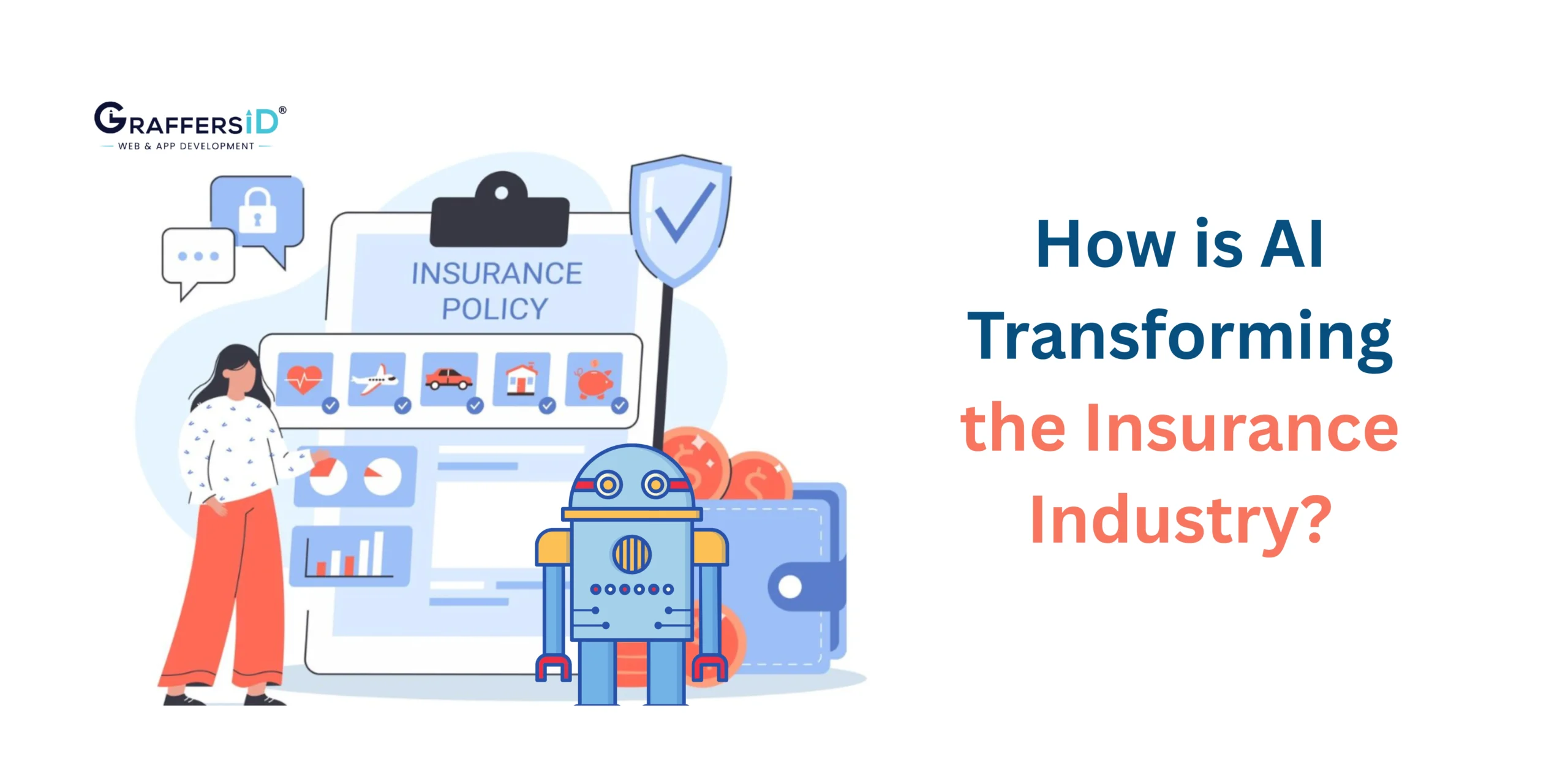Have an idea that can beat Instagram or create competition for popular dating apps like Tinder and Bumble? Then, why not just try to wait? Now, you might be thinking that apps are no small undertaking. And, yes, you are absolutely right. But, then what, will you give up so easily? Let’s discuss the cost to build an MVP.
No, there is no such need. Yes, applications are not cheap to build and maintain, but we have an alternative too. Why not consider launching a Minimum Viable Product (MVP) before creating a new mobile app? With an MVP, you have a lower risk and you will not have to spend thousands of dollars to test your concept on the market.
What is MVP ( Minimum Viable Product)?
A Minimum Viable Product is a version of a new product that includes basic features of an application, which are enough to get validated learning about customers with the least effort. MVP can be an application with only the essential features, a landing page, or a service that appears to be automated but is manual behind the scenes.
MVP offers you a way to:
- Release your product in the market in minimum time.
- Avoid failure and large capital losses
- Gather and enhance user bases
- Test the demand for your product, before releasing the full-fledged version of your product.
- Gain valuable insight on what could work
- Work directly with your client and analyze their behavior.
Developing the concept of the application is another way to look at MVP. MVP, otherwise known as Proof-of-Concept mainly involves verifying the technical side of major product hypothesis. What makes POC different from an MVP is how it is being processed on the side of the development team. MVP is mostly based on fixing bugs, as you go throughout the Alpha and Beta testing of the application.
Firstly, let’s understand what is App Prototype, Minimum Viable Product, Alpha version of the product and Beta version of the product.
App Prototype
POC is a prototype that combines technical verification of features with real-life contexts. Although POC and prototype are often used interchangeably, they are not the same thing. The prototype is creating a coherent product rather than conducting technical tests. So, with a prototype, you focus on things integrations, UI and core features. Moreover, prototypes are only used for internal testing.
Read More: 10 Principles to UI Design as a Founder
Minimum Viable Product
As mentioned above, MVP constitutes features that are crucial and unique. In this case, the whole project development would consume less budget and take less time. The same e-commerce app which will hit the market in 6-8 months can be launched in just a period of 2 months.
If you dive into classifications, MVP can be differentiated in two ways:
- The initial version of the product, which covers prototype
- A minimum viable product is released and used by the potential audience.

Alpha Version of the Product
The alpha version is the first release of the product, while the beta version is the final release before launching the product. There are usually multiple alpha releases of the product. The alpha version is mainly released for feedback collection and is tested internally.
Beta Version of the Product
In contrast to the alpha testing of the product which is done internally, the beta version involves testing the product by early adopters. The beta release of an application involves helping you achieve results like getting ready for fixing bugs, App Store release, and making the product ready according to the user’s expectations.
Main Benefits of Creating an MVP for Your Application

Benefits for Startup:
-
Tapping into the market:
Unless you have developed a beta version before, you don’t know what your audience demands. With a public beta release, you get the first user base to interact with the user.
-
Heating up the Interest:
Public MVP is just like killing two birds with a single stone. It not only allows you to market your app but also heat up the interest. Also, you will get feedback on the product from real users.
-
Collecting investments:
Launching MVP also helps you in getting funds for your startup. Especially, if you are the one who is looking for funding to support business further.
Benefits for enterprise:
-
Prioritizing Functionality:
Established enterprises do not face problems in getting the right exposure and investment to support your application. However, what they need is to separate the promising piece of functionality to sell it with maximum profits. That’s where MVPs with feature prioritization come to help.
-
Market Analysis:
Another important feature of MVP is it lets the companies stay aligned with the market trends. With MVP, you can launch a product that has a strong potential audience, test it with an MVP, and get an idea of clients’ requirements.
What should be the key features of the Mobile App MVP?
Here are some of the important tips that will help you in choosing the key features of the Mobile App MVP:
-
Think in terms of validation and not features:
To understand whether people will use any particular feature in an application, it is not necessary to implement it in an MVP. You can do this simply by encouraging the use of hashtags and analyzing whether people are using the hashtags based on that feature.
-
Create ideal use cases:
Think through the path of your target audience and create a few ideal cases that only include the vital functions of the application.
-
Only include must-haves:
If you are a startup founder, then you must be ready to take risks and shape a product release strategy that is coherent. Only pick the must-haves and weed away the rest, no matter how advanced these features are. In the end, an MVP is not about attractive additional features, it is about validation.
How to Build an MVP?
Here are the key steps to building an MVP:
1. Idea goes first:
It is important to have a clear vision of how your app should look like once it is already before you tap into research. Before developing MVP make sure you are able to answer the following questions:
- What is the goal of developing an app?
- What does it mean to be successful with your app launch?
- What are the unique features that your app will introduce?
2. Market Research:
Don’t think that all the major market research will be done after the launch of MVP. It is crucial to perform preliminary research before actually implementing an MVP. Depending upon the functionalities that you are planning to include in your app, it could be surveys, interviews, or onsite testing. The goal here is to find the features you are planning to include in the application before wasting time and resources on an MVP.
3. Application Design:
Even if the initial version of your application is very basic, it should be user-friendly and have a proper flow. Otherwise, it will bring you distorted results. From the moment the user lands on your application until the completion of the desired action, there should be a smooth experience that should be supported by efficient app design.
Read More: 5 mistakes a start-up makes when building an MVP
4. Develop your MVP app:
It is better to define your scope and outsource your project to the offshore web development team. MVP can have limited functionality, but it should not lack in quality. So make sure to hire the developer with the right expertise.
5. Test and Measure Results:
Run alpha and beta testing of your application to measure the results. Depending upon the goals you set, you can evaluate open rate, client acquisition cost, engagement, signups, and more. While the data you collect will have an impact on the final development stage and major business.
How to Measure Success After Building an MVP?
Here are proven ways to measure the success of MVP
-
Word of Mouth
Traffic is a useful metric that helps you predict the success of your MVP. Another way through which you can measure success is by interviewing potential customers. You can start by listing the problems that you assume your customers might be facing and ask them what they think.
-
Engagement
Measure the success of your MVP by measuring the current value of your product as well as the future. Engagement aids in improving the user experience based on feedback.
-
Sign-ups
Sign-ups are feasible ways to gauge the user’s interest, and they may turn to customers based on the results of measuring interest in your product.
-
Client Appraisals
The number of launch rates and downloads shows the interest users have in your application. The lighter and more user-friendly your application, the more downloads it will get.
-
Paying Users
It shows the level of percentage of people who have stopped using or installed the application.
Churn=Number of churns per week or month/Number of users at the beginning of week or month
Estimated Cost of Mobile App MVP Development
Here is how to predict the cost of developing an MVP:

MVP costs vary widely based on factors such as complexity, features, and development approach. On average, MVP development can range from $10,000 to $100,000.
If you are interested in professional MVP development or mobile app development services, Graffersid is a one-stop solution for you. Whether it is the next Zomato that you want to develop or simply a landing page, to begin with, our professional developers can help you with the process. We make sure to give a kick-start to your journey.
Factors Affecting MVP Development Costs
Complexity of the Idea
The complexity of your MVP idea plays a significant role in cost determination. If your concept involves intricate features or cutting-edge technology, the development process may require more time and resources, thus impacting the overall cost.
Features and Functionality
The number and complexity of features in your MVP directly influence the development cost. Including only the most essential features initially keeps the cost manageable while allowing you to gather valuable user insights.
Design and User Experience
A user-friendly and visually appealing design is crucial for engaging early users. Design complexity and the effort required for a seamless user experience can contribute to the overall cost.
Development Team
The composition of your development team affects costs. Hiring experienced professionals might have a higher upfront cost, but their expertise can lead to a more efficient and effective development process.
Platform and Technology
The choice of platform (web, mobile, desktop) and technology stack can impact development time and cost. Different platforms and technologies have varying levels of complexity and associated costs.
Competitor Analysis and Market Research
Before diving into MVP development, conducting thorough competitor analysis and market research is essential. By understanding what your competitors offer and identifying gaps in the market, you can position your MVP strategically to meet user needs effectively. This research phase also provides insights into user preferences and expectations, which can shape your MVP’s features and design.
MVP Success Stories
Dropbox: The Early Days
Dropbox, a cloud-based file-sharing platform, started as a simple MVP. The founders created a video demonstrating the product’s concept, which garnered significant user interest. This low-cost approach validated the idea before actual development began.
Airbnb: From MVP to Industry Giant
Airbnb’s MVP focused on solving a critical problem: providing affordable lodging options. The founders created a basic website to list available spaces. The positive user response validated the concept and paved the way for further development.
Cost-saving Strategies
Prioritization of Features
Prioritize features based on user needs and core functionalities. Not all features are essential for the initial version. By focusing on the most critical features, you can reduce development time and costs.
Outsourcing vs. In-house Development
Deciding between outsourcing and in-house development is pivotal. Outsourcing companies can be cost-effective, especially when working with offshore teams. In-house development provides more control but may be costlier.
Minimum Marketable Features
Identify the minimum set of features that make your product marketable. These features should provide value to users and demonstrate your product’s unique selling proposition without unnecessary complexity.
Lean Development
Embrace lean development principles by creating a simple MVP that addresses a specific pain point. Avoid overengineering and excessive customization, which can inflate costs.
Frequently Asked Questions (FAQs)
Q1: What is the primary goal of an MVP?
A1: The primary goal of an MVP is to validate your product idea with the least effort and cost by delivering a functional version to early users.
Q2: How long does it take to develop an MVP?
A2: The development timeline varies based on the complexity of the MVP and the chosen features. On average, it can take anywhere from a few weeks to a few months.
Q3: Can I add more features after the MVP launch?
A3: Yes, you can! The MVP launch is just the beginning. You can use user feedback to prioritize and add features in subsequent versions.




